You’ve probably struggled with manually adjusting blinds throughout the day, chasing sunlight or seeking privacy when neighbors walk by. Sensor-activated window blind systems can eliminate this daily hassle while cutting your energy costs and protecting your furniture from UV damage. These smart systems respond automatically to motion, light levels, and temperature changes, but choosing the right one depends on factors you might not have considered yet.
Smart Home Integration Capabilities and Voice Control Options
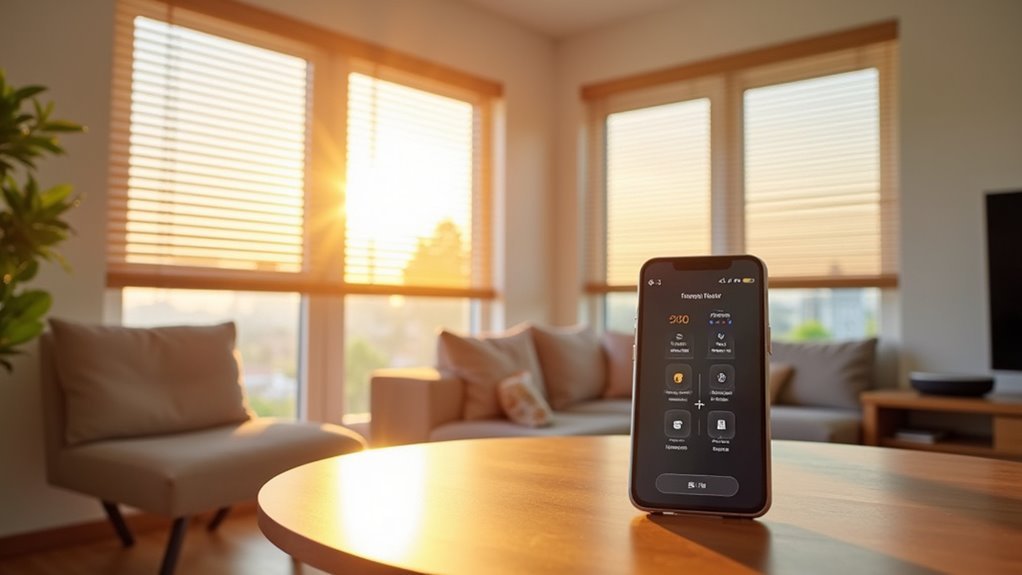
These intelligent systems offer extensive mobile app compatibility, letting you control blinds remotely from anywhere.
Advanced geofencing capabilities automatically adjust your blinds based on your location, enhancing security by simulating occupancy.
Smart blinds can automatically open and close when you leave or return home, creating the illusion someone is always present.
Smart home integration extends beyond basic controls, providing sophisticated automation options that respond to environmental sensors.
This technology optimizes energy efficiency by automatically managing natural light and temperature, while sensor-activated blinds create truly responsive living spaces.
Motion Sensor Technology for Automatic Privacy Control
When someone approaches your windows, motion sensor technology automatically detects their presence and adjusts your blinds to maintain privacy without any input from you. This automatic privacy control responds to specific movements and occupancy patterns, creating seamless shifts between open and closed positions.
You can integrate with smart home ecosystems and customize settings through mobile apps or voice commands. The system works alongside daylight sensors to reduce glare during peak sunlight hours while protecting your furnishings.
Motion sensor technology enhances energy efficiency by optimizing natural light usage and reducing artificial lighting dependence. These smart home ecosystems enable you to program specific triggers and responses, ensuring your blinds automatically adjust based on both human presence and lighting conditions for maximum comfort and privacy.
Light Level Detection Systems for Optimal Natural Lighting
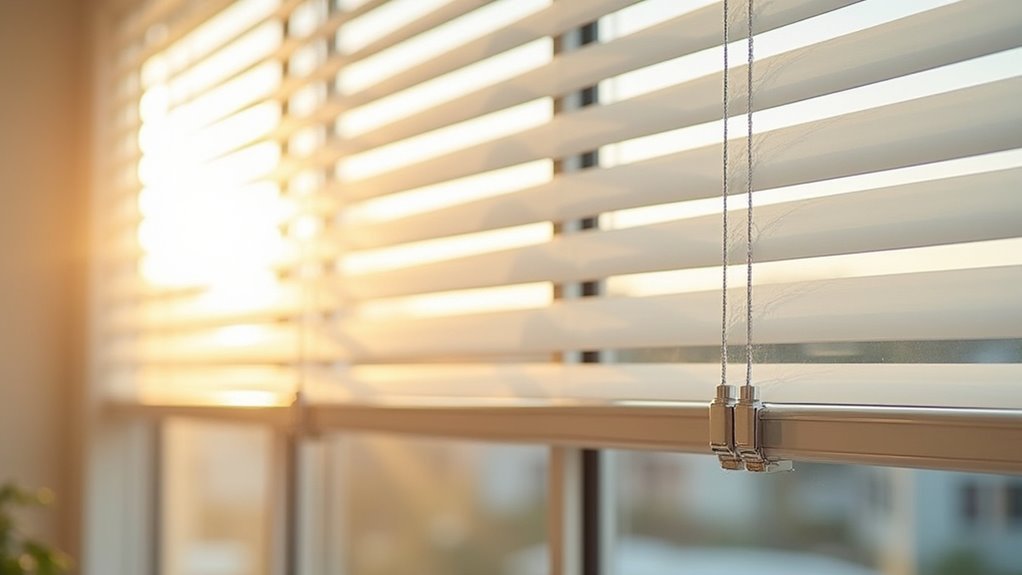
Light level detection systems automatically monitor your home’s ambient lighting conditions and adjust window blinds to maximize natural illumination throughout the day. These sensor monitoring solutions integrate seamlessly with smart home ecosystems, enabling automated schedules that align with your daily routines while delivering impressive energy efficiency benefits.
| Feature | Benefit |
|---|---|
| Automated schedules | Seamless lighting shifts |
| Energy savings | 10-15% reduction in bills |
| UV damage protection | Preserves furniture and flooring |
| Smart home ecosystems | Coordinated home automation |
| Geofencing technology | Location-based adjustments |
You’ll optimize natural light through programmable thresholds that maintain comfortable illumination while protecting your interiors from harmful UV rays. Advanced models incorporate geofencing technology, adjusting blinds based on your location to enhance energy savings and indoor comfort without manual intervention.
Temperature-Responsive Blinds for Energy Efficiency Management
Temperature-responsive blinds take automated home comfort beyond light management by intelligently reacting to thermal conditions inside and outside your home.
These systems use sensors to monitor temperature fluctuations and make automated adjustments that regulate heat gain throughout the day. You’ll see them close during peak heat hours to block excessive sunlight, then they’re programmed to open during cooler periods to welcome natural light while reducing your reliance on artificial lighting.
The energy efficiency benefits are substantial – you can expect energy savings of 10-15% on your annual heating and cooling bills.
Integration with smart home technology enables remote monitoring and control from your smartphone. For eco-conscious homeowners, these blinds represent a worthwhile investment that combines convenience with improved energy management.
Occupancy-Based Window Treatment Automation
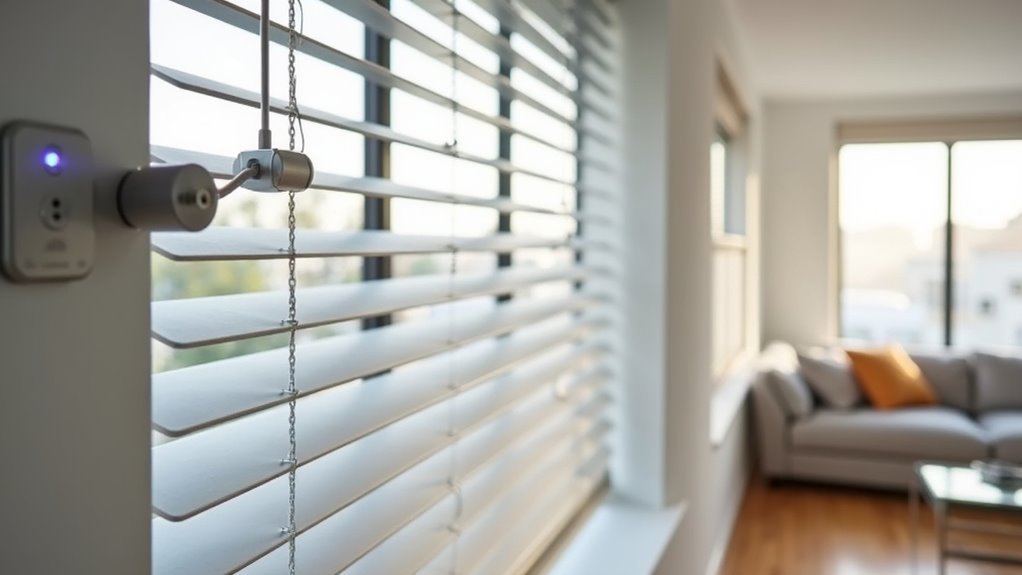
You can transform your home’s energy efficiency by installing occupancy-based window treatment systems that automatically detect when rooms are occupied or vacant.
These smart systems use advanced motion detection technology and sophisticated room presence algorithms to determine the ideal positioning of your blinds throughout the day.
Motion Detection Technology
When you enter or leave a room, motion detection sensors automatically trigger your window blinds to adjust, creating a responsive environment that adapts to your presence.
Motion detection technology powers occupancy-based automation that responds instantly to movement, optimizing indoor lighting and temperature control without manual intervention.
Your smart shades deliver significant benefits through advanced sensing capabilities:
- Energy efficiency – Automatic adjustments reduce heating and cooling demands, generating energy savings of 10-15% on utility bills
- Smart integration – Seamless connectivity with smart home hubs enables remote control through mobile apps and voice assistants
- Enhanced security – Motion sensors simulate occupancy when you’re away, improving privacy and security by deterring potential intruders
This intelligent automation transforms your living space into a responsive environment that prioritizes comfort while maximizing efficiency.
Room Presence Algorithms
Although motion detection provides basic presence awareness, room presence algorithms take occupancy-based automation several steps further by analyzing behavioral patterns and environmental factors to create truly intelligent window treatment systems.
These room presence algorithms excel at automatically adjusting window treatments by integrating with smart home platforms and tracking your daily occupancy patterns.
Advanced algorithms consider time of day and sunlight intensity to create a personalized environment that optimizes natural light while reducing glare.
You’ll benefit from enhanced energy efficiency as the system automatically raises or lowers shades based on real-time occupancy data.
This intelligent automation delivers substantial energy savings, potentially reducing your heating and cooling costs by 10-15% annually through optimized temperature control.
Energy Optimization Benefits
Beyond simple automation convenience, occupancy-based window treatment systems deliver measurable financial returns through strategic energy optimization that adapts to your actual presence and absence patterns.
These sensor-activated systems enhance energy efficiency through three key mechanisms:
- Real-time sunlight management – Automatically adjust shades based on solar intensity to minimize heat gain during peak hours.
- Programmable schedules – Align with your daily routines to maximize natural light while reducing heating and cooling demands.
- Temperature-responsive controls – Detect temperature changes and modify shade positions to maintain consistent indoor climate.
When integrated with smart home systems, you’ll reduce reliance on HVAC systems by up to 15%, directly lowering energy costs.
This home automation approach transforms your window treatments into active participants in climate management rather than passive décor elements.
Smartphone App Control and Remote Monitoring Features
Revolution in window treatment management arrives through sophisticated smartphone app control that puts complete control at your fingertips.
You’ll access your motorized blinds from anywhere, adjusting settings remotely while monitoring their status in real-time. Brands like SmartWings and Serena Shades provide apps enabling automatic scheduling based on time or sunlight levels, delivering genuine peace of mind when you’re away from home.
Integration with smart home ecosystems transforms your experience entirely. You can control blinds through Amazon Alexa and Google Assistant voice commands, creating seamless automation alongside other connected devices.
Advanced geofencing technology automatically adjusts blinds based on your location, optimizing energy efficiency while enhancing security. Remote monitoring capabilities guarantee you’ll always know your window treatments’ current status, providing unprecedented convenience and control.
Solar Panel Charging Options for Wireless Operation
You’ll find that solar panel charging transforms your motorized blinds into a truly wireless system that operates independently for months or even years.
The installation process is straightforward—you can mount compact solar panels directly on your window frame or choose models with integrated panels that blend seamlessly with your blinds’ design.
Once installed, these panels require minimal maintenance while continuously harvesting sunlight to keep your automated window treatments running efficiently.
Solar Panel Benefits
When you’re considering wireless motorized blinds, solar panel charging options offer a game-changing solution that eliminates the constant need for battery replacements and electrical connections.
This sustainable approach provides energy-efficient power that keeps your smart technology running smoothly while contributing to home energy savings.
Solar panels deliver three key advantages for your motorized blinds:
- Extended battery life – Built-in panels maintain continuous operation for over a year without recharging.
- Reduced maintenance – You’ll eliminate frequent battery replacements and minimize upkeep costs.
- Eco-friendly operation – Solar power aligns with green home improvements while reducing energy consumption.
These systems prove especially valuable for hard-to-reach windows where manual charging becomes impractical, ensuring your blinds function consistently without disrupting your daily routine.
Installation and Maintenance
Installing solar-powered motorized blinds requires careful planning around sunlight exposure and window positioning to maximize charging efficiency.
The installation process involves mounting solar panels where they’ll receive ideal sunlight throughout the day. You’ll need to take into account your window coverings’ orientation and any potential obstructions that might block charging capabilities.
Most systems include a rechargeable battery that can operate for up to a year between charges, enhancing energy efficiency considerably.
Smart home compatibility allows seamless integration with existing automation systems, while customization options let you tailor functionality to specific needs.
For maintenance, you should periodically clean solar panels and check battery performance.
Many manufacturers offer retrofit smart kits, enabling you to upgrade existing blinds without major renovations or extensive modifications.
Hub-Free Vs Hub-Required Sensor Systems
While sensor-activated window blind systems offer impressive automation capabilities, the fundamental choice between hub-free and hub-required configurations will greatly impact your installation experience and long-term functionality.
Hub-free systems provide straightforward installation with direct control of motorized shades, eliminating the need for additional equipment. However, they typically offer limited automation features and shorter battery life due to direct wireless communication.
Hub-required systems demand more complex installation but deliver superior smart home ecosystem integration.
Consider these key differences:
- Compatibility: Hub-required systems support multiple platforms and devices
- Remote access: Advanced systems enable control from anywhere
- Automation features: Complex routines and scheduling capabilities
Your user preference between simplicity and extensive integration will determine the ideal choice. Hub-free suits basic automation needs, while hub-required systems excel in sophisticated smart home environments.
Battery Life and Maintenance Requirements
After selecting your sensor-activated window blind system, you’ll need to understand the battery maintenance requirements that keep your automated shades functioning reliably.
Most motorized blinds feature rechargeable lithium battery packs that deliver 6-12 months of battery life, depending on your usage frequency. You’ll find that smart models demonstrate impressive low battery drain, with some consuming only 2% monthly through efficient power management systems.
Smart motorized blinds offer exceptional energy efficiency with rechargeable lithium batteries lasting 6-12 months and minimal 2% monthly power consumption.
Regular monitoring guarantees uninterrupted operation of your automated window treatments. When charging becomes necessary, many systems offer convenient USB charging options that don’t require professional assistance.
The maintenance process remains straightforward—you can easily replace or recharge battery packs yourself. Modern sensor-activated blinds prioritize energy efficiency, so you won’t constantly worry about power depletion while enjoying the convenience of automated light control.
Installation Complexity and Professional Setup Considerations
Beyond maintaining your system’s power supply, you’ll encounter varying levels of installation complexity that depend on your window specifications and chosen power source.
Professional setup becomes essential for peak performance, especially when integrating with smart home systems or handling larger windows.
The installation complexity varies greatly based on three power options:
- Battery-operated systems offer the simplest installation with basic mounting requirements.
- Solar units need strategic positioning for adequate sunlight exposure and precise measurements.
- Hardwired configurations demand electrical expertise and professional assistance.
While manufacturers provide detailed installation instructions, you’ll benefit from experienced installers who prevent common pitfalls.
Professional setup costs range from $100 to $300 per window, depending on system complexity and local rates, but guarantees proper functionality and integration.
Frequently Asked Questions
Is It Worth Getting Motorized Blinds?
You’ll likely find motorized blinds worthwhile if you value convenience, energy savings, and safety. They’re expensive upfront but offer long-term benefits through reduced energy bills and smart home integration capabilities.
What Are the Disadvantages of Motorized Blinds?
You’ll face higher upfront costs, potential power outage issues, regular battery replacements, professional installation requirements, and possible operational noise. These factors can make motorized blinds less practical than traditional manual options.
Are Motorised Roller Blinds Worth It?
You’ll find motorized roller blinds worth it if you value convenience and energy savings. They’re expensive upfront at $900 per window, but you’ll save $100-200 annually on energy bills.
Do Motorized Blinds Add Value?
You’ll see motorized blinds add real value to your home. They can increase resale prices by up to 5% while reducing energy costs 10-15% annually, attracting tech-savvy buyers seeking modern convenience.

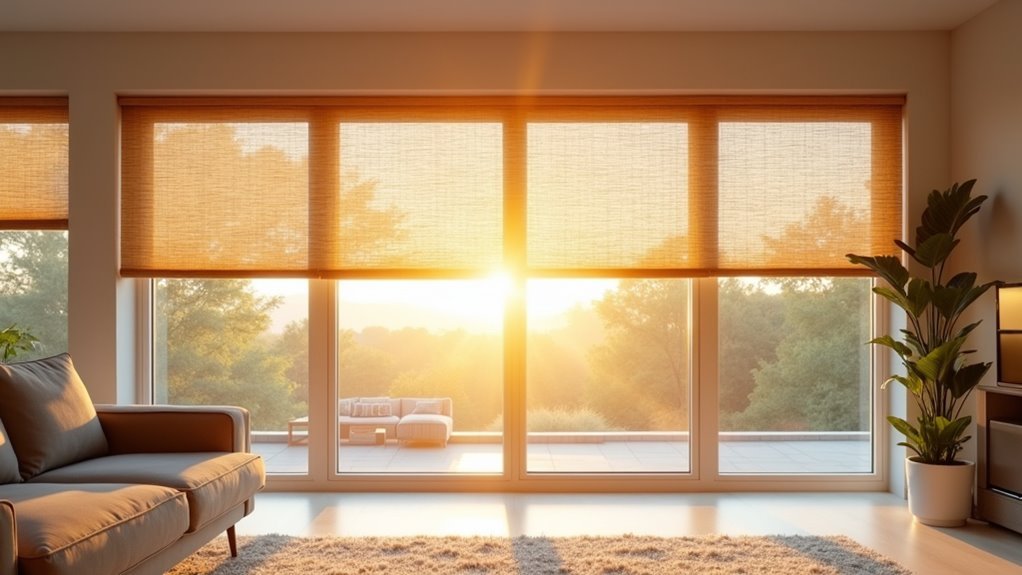
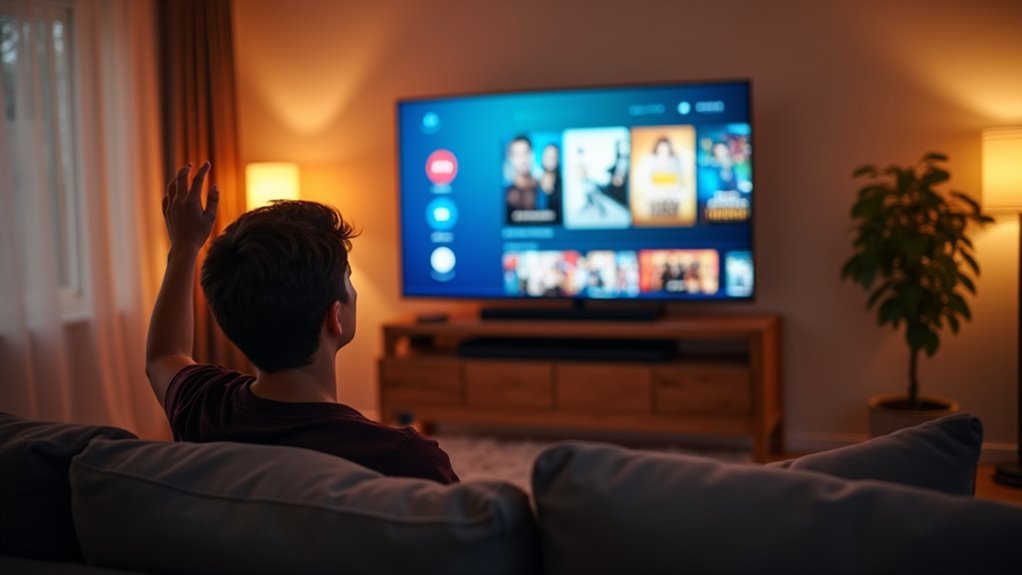
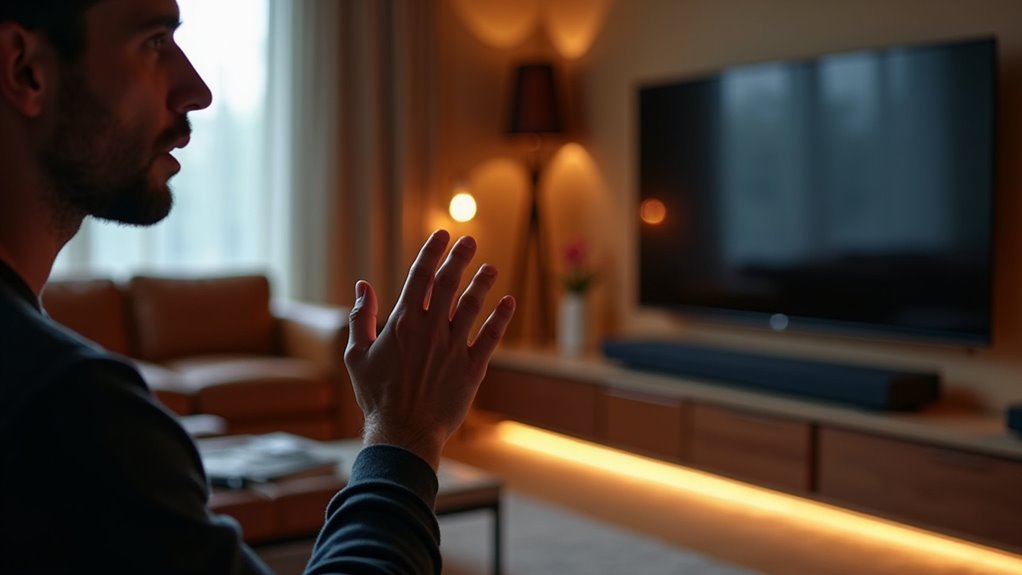
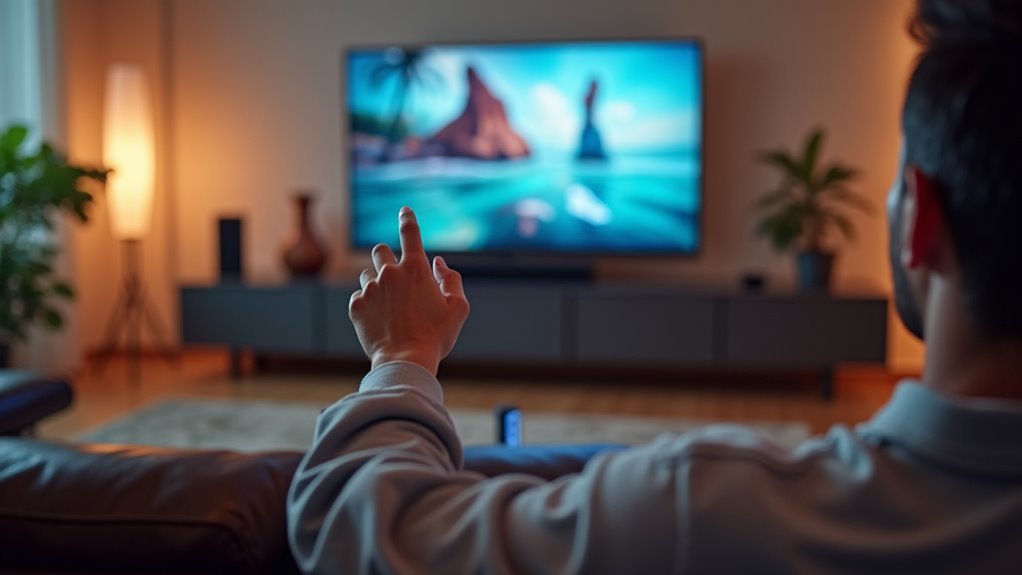
Leave a Reply